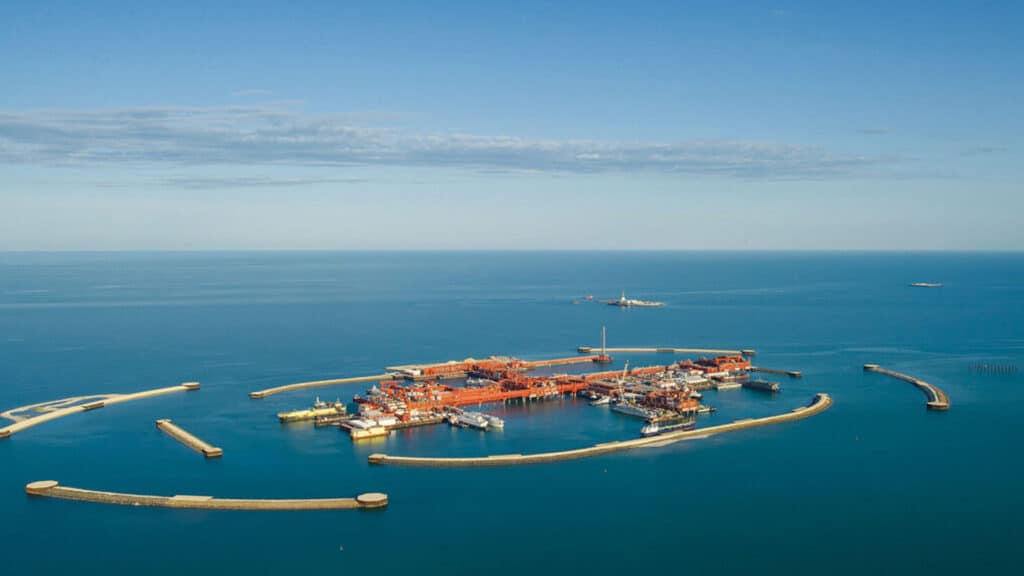Kashagan oil field set to reach 1 billion-barrel milestone in 2025

Kazakhstan’s largest oil field, Kashagan, located on the Caspian Sea shelf, is expected to reach 1 billion barrels of cumulative oil production by the end of 2025, according to the Energy Monitor Telegram channel.
The projection was shared following a May 28 meeting between Kazakh Prime Minister Olzhas Bektenov and ExxonMobil Vice President Peter Larden. Since the field began operations, approximately 906 million barrels have been produced. Recoverable reserves are currently estimated at 15.8 billion barrels, with reserves continuing to increase.
Bektenov and Larden discussed expanding cooperation in the oil and gas sector, including infrastructure development and the adoption of advanced technologies.
According to Energy Monitor, one of the key conditions for increasing Kazakhstan’s share of profitable oil, which currently accounts for just 10% of profits and 2% of total production, is reaching a cumulative output of 3 billion barrels. At the current pace, this could take at least another decade. Meanwhile, investors are reportedly hesitant to move forward with stages 2B and 2C of development. These phases include boosting production by 200,000 barrels per day and constructing a new onshore oil and gas processing facility, respectively.
The meeting also addressed ongoing developments at the Tengiz and Kashagan fields, as well as the uninterrupted operation of the Caspian Pipeline Consortium (CPC) system, a key export route for Kazakhstan’s crude oil. The recent launch of the Future Growth Project at Tengiz was highlighted as a major step toward strengthening Kazakhstan’s position in global energy markets.
Discussions also included stage 2A of the Kashagan development, which aims to increase output and consists of the construction of a gas processing plant with a planned annual capacity of 2.5 billion cubic meters. Both parties emphasized the urgency of accelerating decisions around stage 2B.
Bektenov stressed the importance of increasing local content in the procurement of goods, services and labor for the Tengiz project, citing insufficient localization levels, particularly for goods.
KazMunayGas (KMG), a subsidiary of Kazakhstan’s sovereign wealth fund Samruk-Kazyna, reported that Kashagan’s oil production is expected to reach 17.8 million tons in 2025, up from 17.4 million tons in 2024. KMG holds a 16.88% stake in the North Caspian Operating Company (NCOC), which runs the field.
Tax data related to another NCOC stakeholder, Shell Kazakhstan Development B.V., which holds a 16.807% stake, revealed a pattern of negative tax payments in recent years due to excess VAT refunds. In 2024 alone, Shell received a VAT refund totaling 8.05 billion tenge (about $18.2 million), after similar refunds in 2023, 2022 and 2021. However, in the first quarter of 2025, Shell paid approximately $11 million in taxes.
Kashagan is the first offshore oil and gas field developed in Kazakhstan’s sector of the Caspian Sea. Recoverable reserves are estimated at 9 billion to 13 billion barrels of oil. Commercial production began on Nov. 1, 2016. The field produced 18.8 million tons of oil in 2023, up from 12.7 million tons in 2022. To date, NCOC has invested approximately $60 billion in the project.
The NCOC consortium includes several key stakeholders: KMG Kashagan B.V. (16.877%), Shell Kazakhstan Development B.V. (16.807%), Total EP Kazakhstan (16.807%), Agip Caspian Sea B.V. (16.807%), ExxonMobil Kazakhstan Inc. (16.807%), CNPC Kazakhstan B.V. (8.333%) and Inpex North Caspian Sea Ltd. (7.563%).

